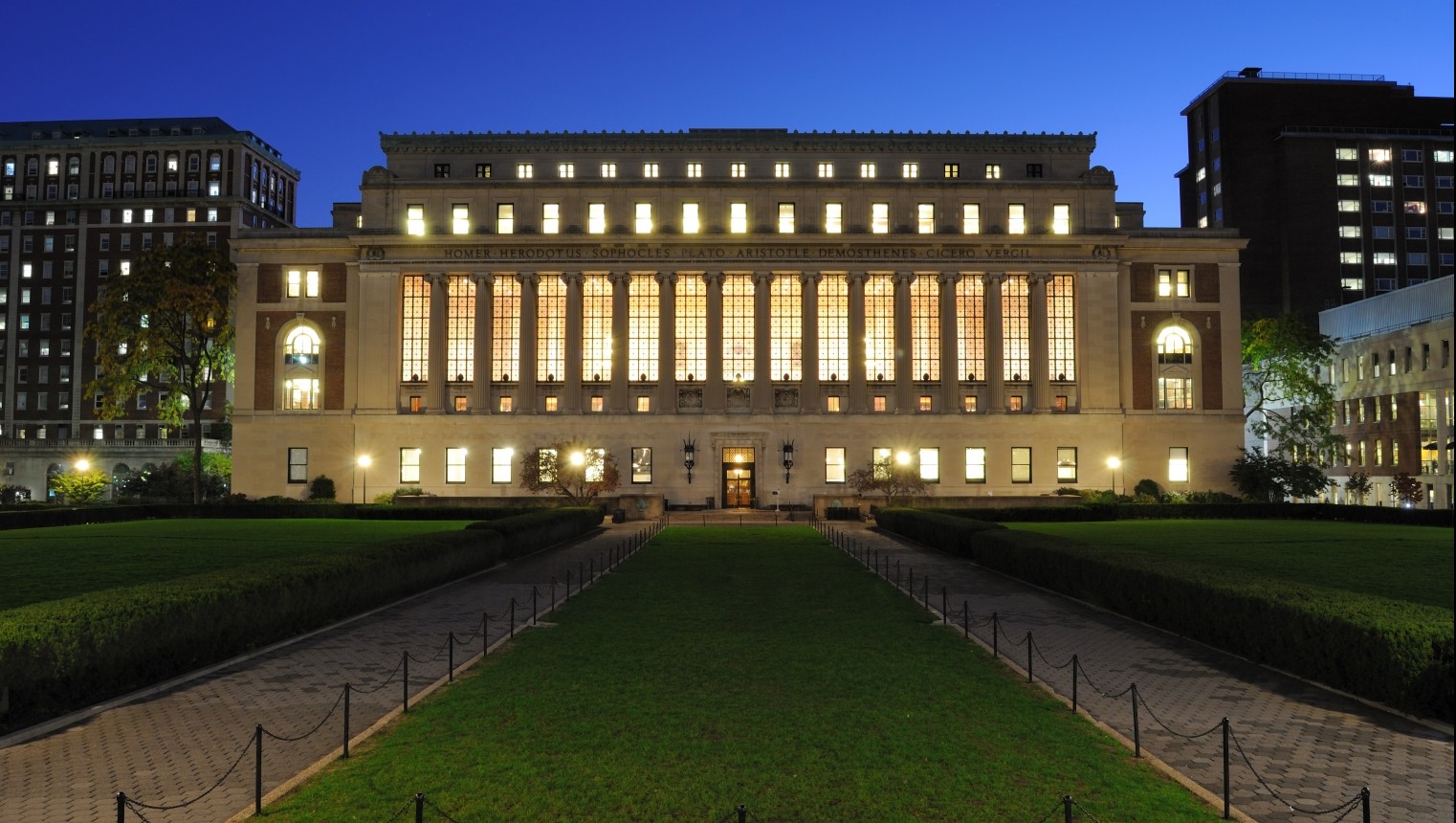A Brief History of GSAS

One of the oldest and most distinguished graduate schools in the United States, the Graduate School of Arts and Sciences administers the education of graduate students in the Humanities, Natural Sciences, and Social Sciences, and confers the PhD degree in all of the professional schools of Columbia University.
The history of Columbia’s Graduate School of Arts and Sciences (GSAS) begins with the founding of King’s College in 1754, located first at Trinity Church in downtown Manhattan. The entering class of eight students followed a curriculum focused on Latin and Greek language, history, and literature. In 1760, King’s College moved to Park Place and Church Street, near today’s City Hall, where it stayed for nearly a century. In 1857, Columbia College—as it was renamed following the American Revolution—moved uptown to 49th Street and Madison Avenue. Concurrently, the Board of Trustees began to offer a master’s degree in letters, science, or jurisprudence, presaging the rapid diversification of Columbia’s offerings that would soon follow.
Expansion beyond undergraduate education accelerated with the founding of the School of Law (1858) and the School of Mines (1864)—where Columbia’s first PhD was granted in 1875. The Faculty of Political Science was added in 1880 and would become one of the foundational elements of GSAS, along with the Faculty of Philosophy (1890) and the Faculty of Pure Science (1892). Together these schools were known as “The Graduate Faculties.” Notably, they were open to women when the college and many other Columbia schools were not. By the 1890s, President Seth Low noted that Columbia’s facilities were inadequate for the growing institution, and began looking for a new site for the campus.
After a visit to bucolic Morningside Heights, which a guidebook of the day called “a most beautiful and commanding site,” Low and his colleagues signed on to move Columbia uptown, hiring the renowned architect Charles McKim to design an urban academic Acropolis on the Hudson. The centerpiece of McKim’s design was Low Memorial Library, a neoclassical building modeled on the Pantheon and the Baths of Caracalla and named for Seth Low’s father. (No longer a library, today it is home to many administrative offices, including those of GSAS.) To reflect its increasing focus on graduate and professional education, the school was renamed Columbia University in 1896, and debuted its new campus on the Heights the following year.
From 1902 to 1945, under the leadership of its longest-serving president, Nicholas Murray Butler, PhD 1884, Columbia emerged as a model research university—a company of scholars, thinkers, and investigators working with apprentice graduate students to advance the frontiers of knowledge. From Harold Urey’s discovery of heavy hydrogen to the foundational work that would lead to MRI machines and lasers, from Richard Hofstadter’s theories on political conduct to John Erskine’s influential essay “The Moral Obligation to Be Intelligent,” Columbia’s reputation for innovative research and scholarship blossomed in the twentieth century. Notable alumni from this period include historian Charles A. Beard, PhD 1904; anthropologist Margaret Mead, PhD ’29; literary critic Lionel Trilling, PhD ’38; author and scientist Isaac Asimov, PhD ’48; science fiction writer Ursula LeGuin, MA ’52: historian Howard Zinn, PhD ’58; and former US Secretary of State Madeleine Albright, PhD ’76.
In 1979, the Faculties of Political Science, Philosophy, and Pure Science officially merged as the Graduate School of Arts and Sciences. Alumni from that era include documentary filmmaker Ric Burns, MA ’83; and astrophysicist Neil DeGrasse Tyson PhD ’91. In this century, famous GSAS graduates include comedian Amanda Seales; MA ’05; novelist Christine Smallwood, PhD ’14; composer Tyshawn Sorey, DMA ’17; and activist and founder of IraQueer, Amir Ashour, MA ’18.
The preeminence of graduate studies at Columbia today is reflected in the size and diversity of GSAS, one of the largest private graduate schools in the country. A full-time faculty of approximately nine hundred in twenty-eight in the Arts and Sciences departments instructs more than 3,500 students in thirty-one PhD programs and forty-six MA programs. In addition, GSAS confers PhD degrees for sixty-seven programs administered by other university schools, such as Architecture, Business, Engineering, International Affairs, Journalism, and Public Health. GSAS is the entity that superintends and confers the PhD degree at Columbia.
The university's evolution continues today. A network of eleven global centers, from Paris to Beijing, provides experimental platforms for scholarly interaction between Columbia and diverse world regions. Closer to home, the university continues to grow with the development of the seventeen-acre Manhattanville campus at 125th Street, just north of Morningside Heights. The newer campus features arts facilities, research labs—including a neuroscience research and teaching center. Initiatives like these are based on the understanding that new areas of learning and discovery will continue to arise—a flexibility of thought and planning that describes Columbia’s past as well as its future.
